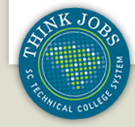Dual Enrollment Overview
Dual Enrollment applies to students who are enrolled in both high school and college. This is made possible under a 2005 South Carolina State Law called the Education and Economic Development Act or EEDA.
The two options for Dual Enrollment at technical colleges across the state are:
- Concurrent Enrollment - whereby a high school student takes college courses, and requests college credit only.
- Dual Credit Enrollment - whereby a high school student enrolls in college courses, and requests both high school credit and college credit.
Dual Enrollment is available to eligible juniors or seniors who obtain both parent and school written permission. Exceptional freshmen and sophomores may be recommended by the high school principal. In addition, students must be accepted by their local technical college.
A variety of courses are offered for dual enrollment credit among the sixteen technical colleges. Courses range from general education sections in English and Math to technical education courses in Radio and Television, Early Childhood Development and Criminal Justice.
Benefits of Dual Enrollment
A recent study by the Community College Research Center shows that one in college, students who had taken dual enrollment courses received higher grade point averages (GPA) and persisted in completing a college credential at a rate greater than their peers. The study also found that males, low income students and those with a lower GPA benefitted more from dual enrollment than their peers.
Top Ten Dual Enrollment Courses Offered Throughout the SC Technical College System

For questions or additional information about dual enrollment within the SC Technical College system, please contact the Academic Affairs division at 803.896.5361.
Visit the South Carolina Transfer and Articulation Center (SC TRAC) site to find:
- Transfer course equivalencies;
- Transfer profiles for the participating institutions;
- Searchable databases such as Search by Institution and Search by Course; and
- Planning for Transfer Guidance.

